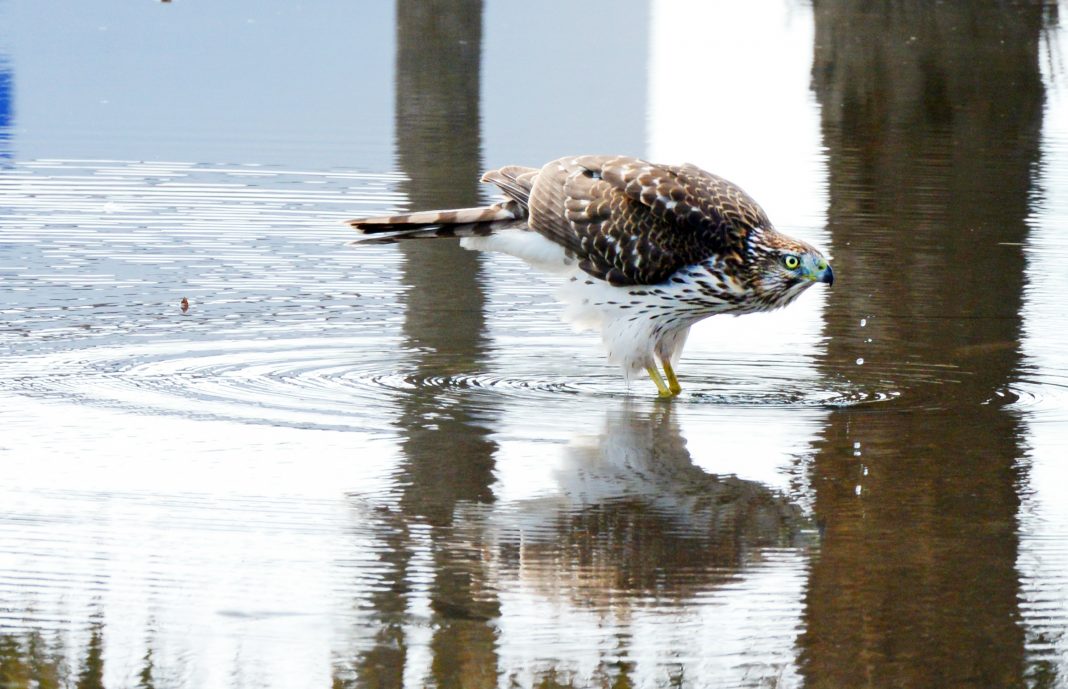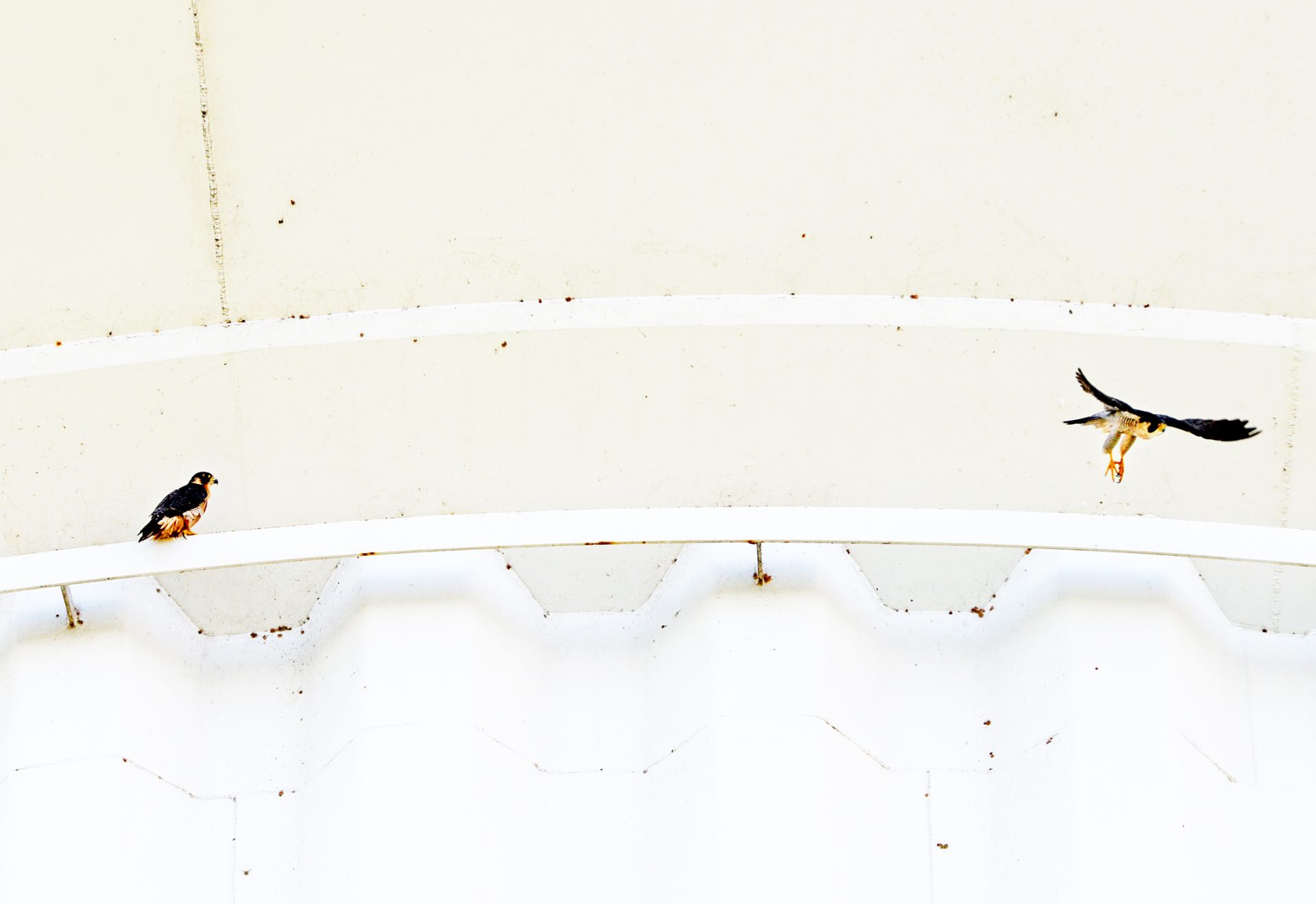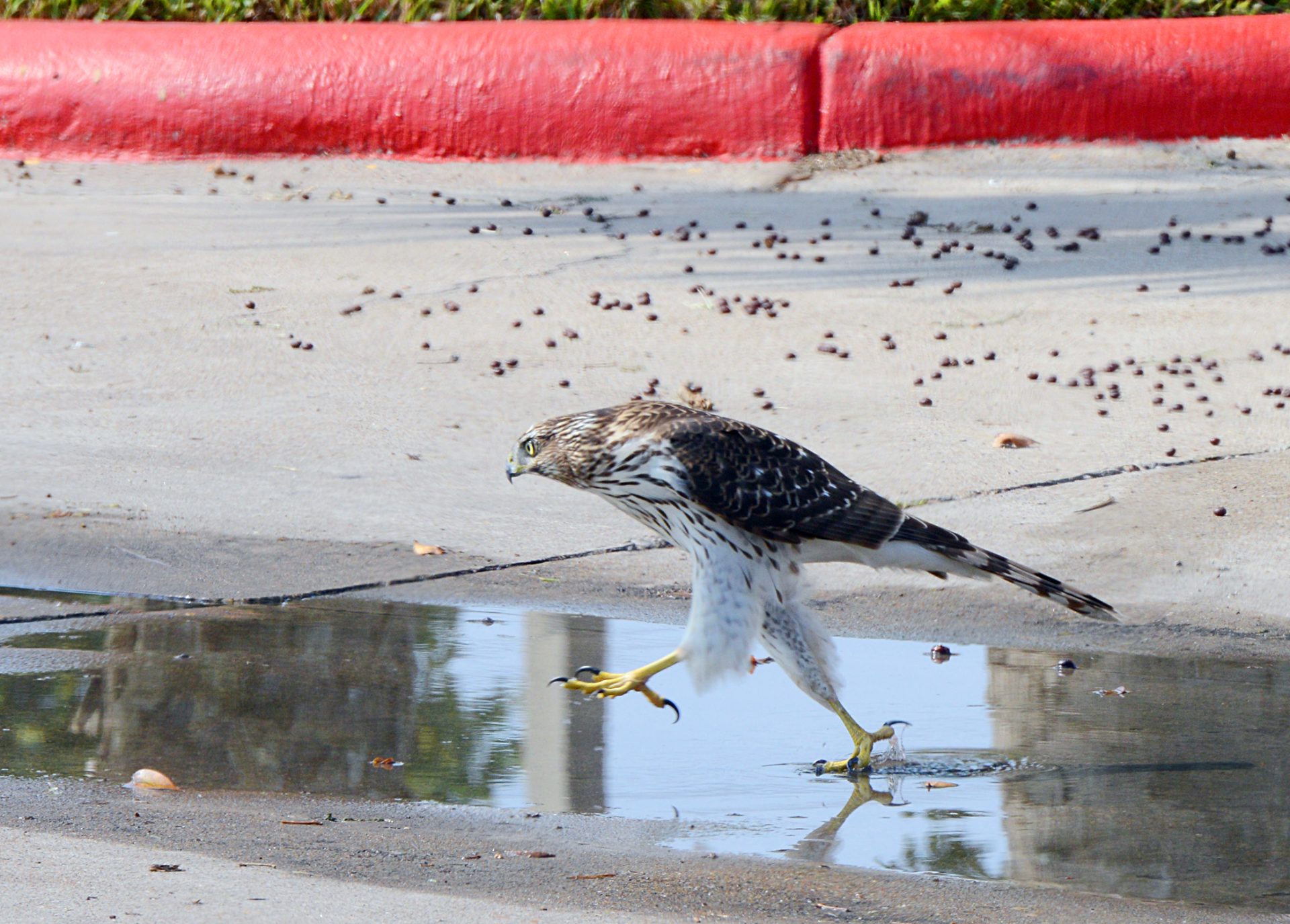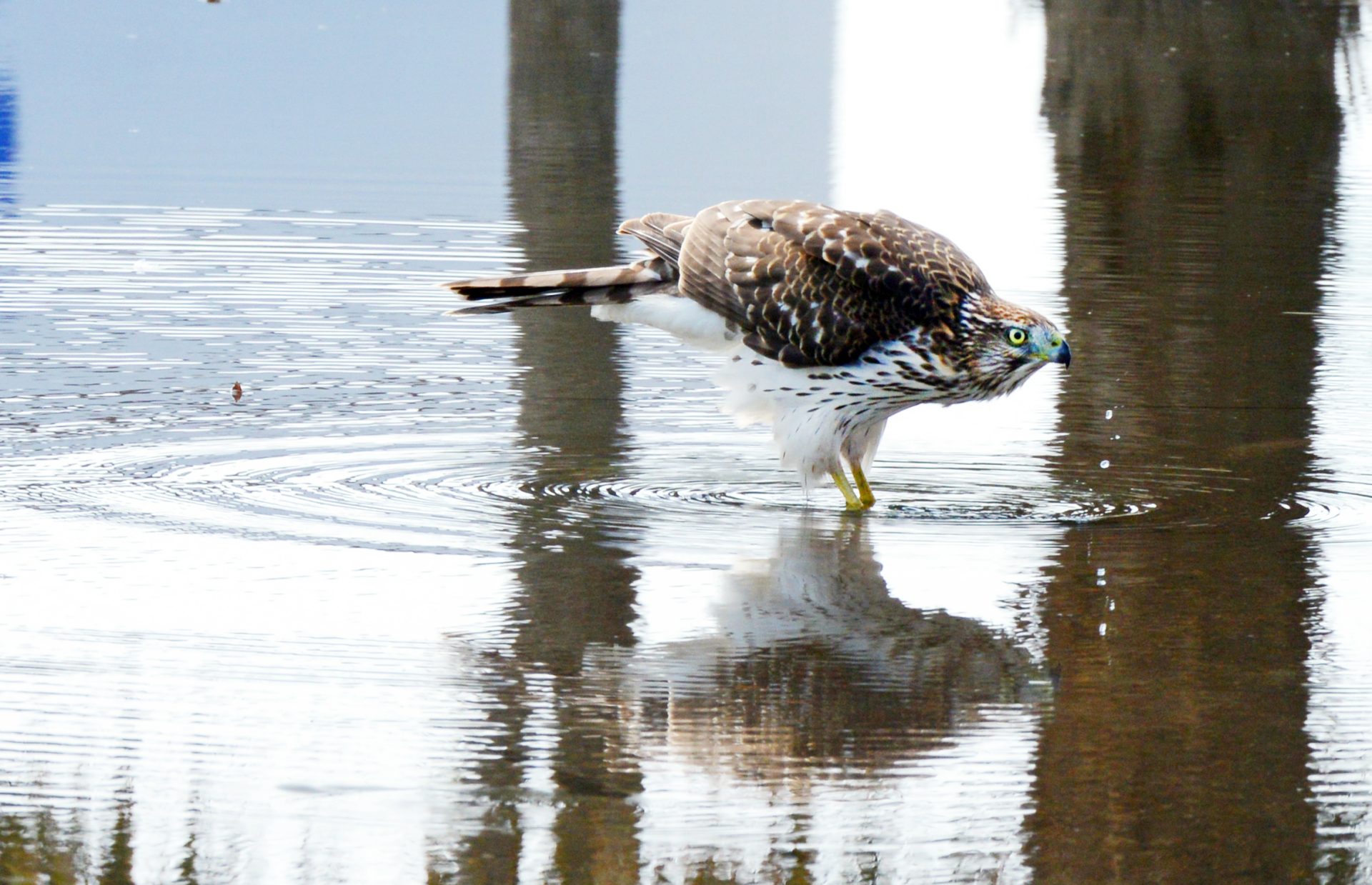Although Jorge Flores retired as Brownsville’s U.S. Customs Service port director in 2001, he still has friends in high places.
Since 2013, Flores has logged the seasonal comings and goings of peregrine falcons that roost on a water tower near his home off East Alton Gloor Boulevard, when the sleek birds of prey arrive in the fall and depart again in the spring to migrate north. He and his late wife, Diana, first began noticing them in 2011, and the couple enjoyed the birds together until she became ill.
“We were so attached to them, my wife and I,” Flores said. “Every day we’d look and finally they’d show up. We had seen them for a couple of years, and then I started tracking them because they were like family now.”
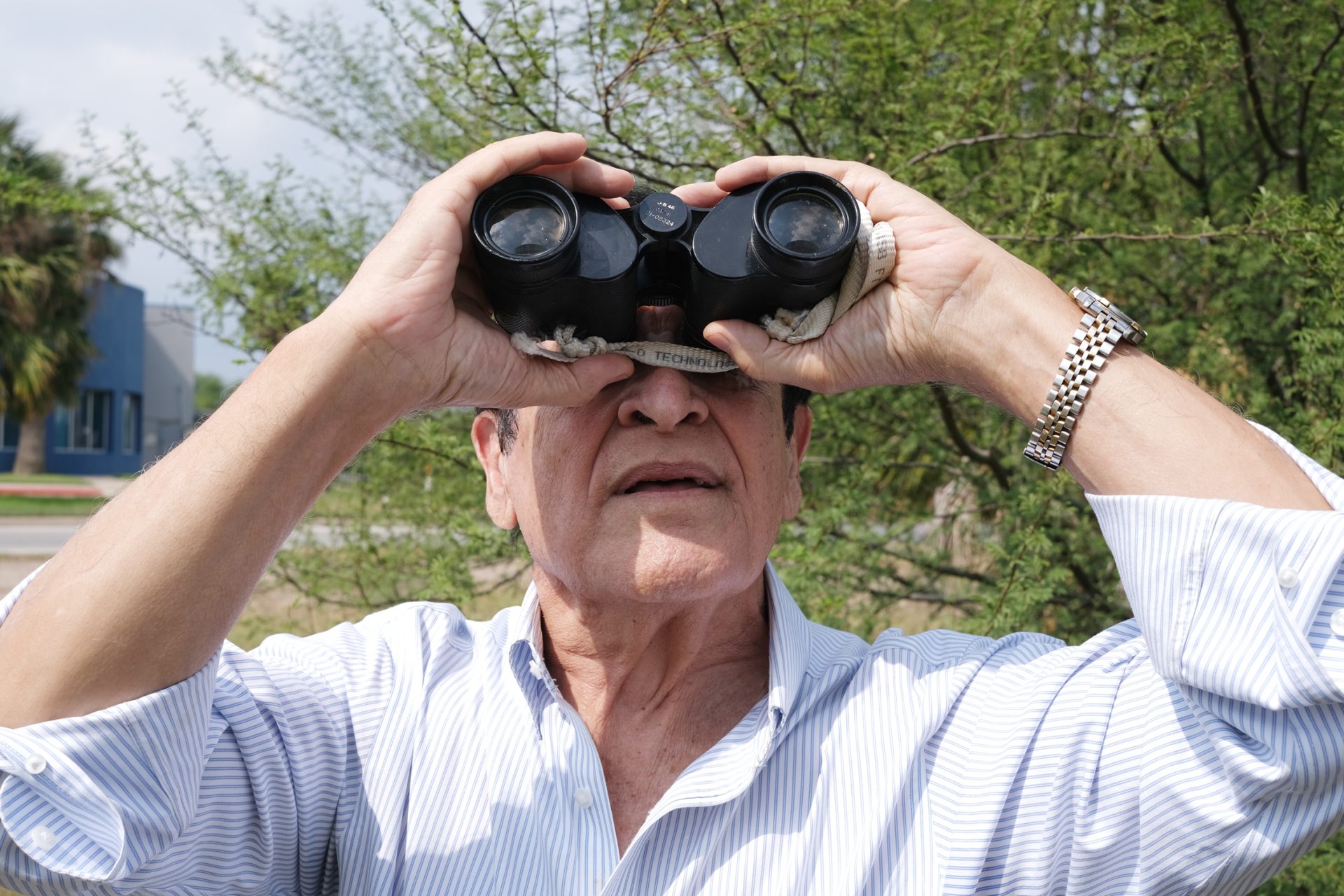
His first log entry noting the arrival of a peregrine falcon, who Flores named “Felipe,” was Oct. 6, 2013. The most recent arrival date is Sept. 16, 2022. The first departure he’s logged is April 16, 2013, and the most recent, March 31, 2022. The dates never vary by much — two weeks at the most, Flores said.
“I have the benefit of living a few blocks from there and drive that area every day in the mornings and the afternoons,” he said. “They’re there most of the time except when they’re hunting, late in the afternoon or maybe early in the morning.”
A resaca lies at the foot of the water tower at Alton Gloor and Rustic Major Drive. It provides a fertile hunting ground due to the many birds that inhabit it. Peregrines chiefly subsist on birds — songbirds, pigeons, ducks, shorebirds and even geese and gulls. They are the fastest animals on earth and have been clocked over 200 mph while diving. Flores said watching them race past the treetops in pursuit of an unlucky dove or other prey is an amazing sight.
“Yesterday I saw two of them,” he said. “It’s mostly one, but three or four times a year there’s two. It looks like a female. It’s a little smaller than the one I’ve been tracking.”
Flores says they’re beautiful. The water he keeps in his backyard for birds attracts plenty of white-wing and mourning doves, which like to perch in Flores’ ebony trees and become very spooked when a peregrine or other raptor is near, he said. Flores said he loves nature and conservation and has been a hunter all his life, and has a hunter’s admiration for the peregrine, whose name comes from the Latin word “peregrinus,” which means “to wander.”
They’re found on every continent except Antarctica. In North America their range extends from western Alaska to Canada and South Greenland all the way down to the southern tip of South America. Countless numbers of them migrate every year through the Rio Grande Valley and along the Texas coast.
Use of the pesticide DDT nearly drove peregrines to extinction in the 1950s and 1960s, though they’ve made dramatic comeback since DDT was banned in 1972 thanks to serious conservation and recovery efforts.
Peregrine falcons can live up to 15 years or longer, according to the National Wildlife Federation, so even though Flores can’t know for sure whether they’re the same birds returning each year, it’s not unreasonable to think so. At any rate, he’ll be keeping an eye out for them.
“I’m not an expert, but I’m a good observer,” he said.

